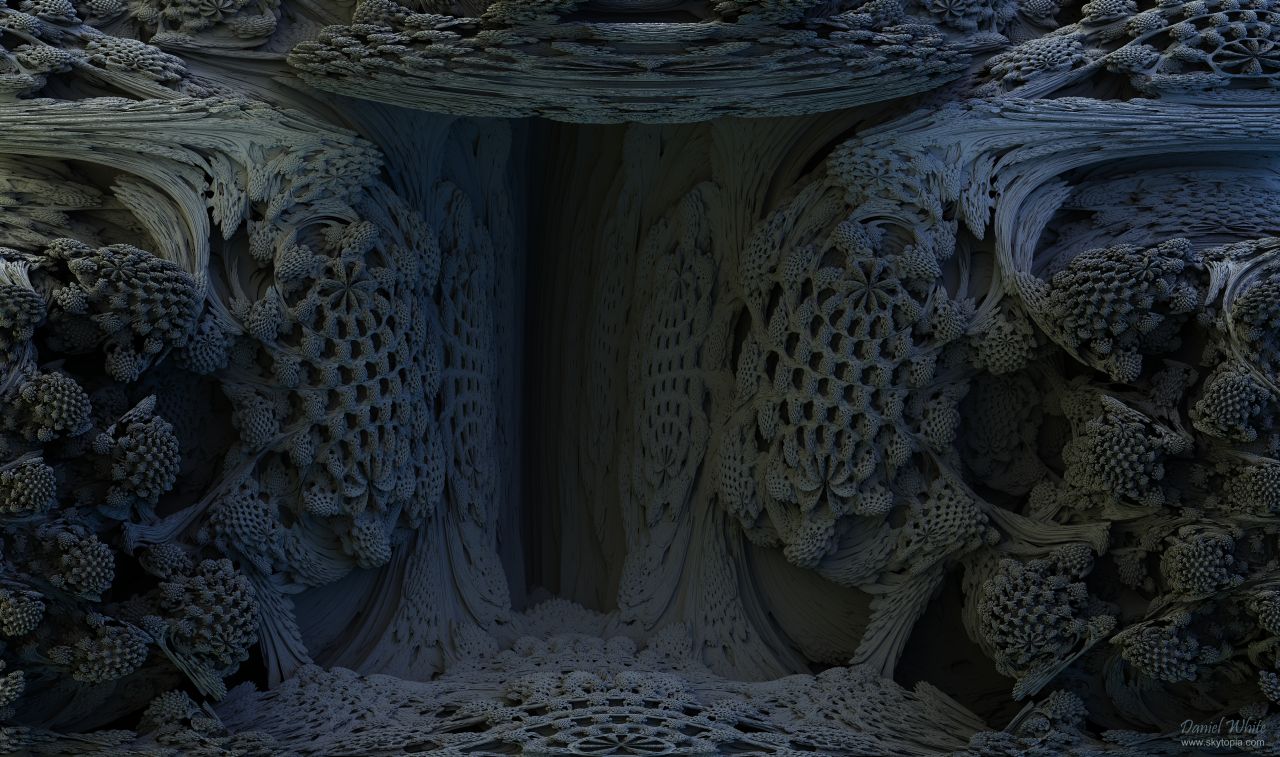Okay, technically these aren't true Mandelbrot sets, or even true fractals. Due to a quirk of quaternion mathematics, true fractals generated by quaternions can only exist in even-numbered dimensions of four or higher (quaternions being, by definition, four dimensional), hence these structures are referred to as pseudofractals. When attempting to measure the fractal dimension of pseudofractals, the calculation diverges. (At least this is what I've heard. I've not attempted the calculations myself, but should give it a stab.) Hmmm, space-time is 4D. Possibilities. A time-varying volumetric Mandelbrot set, anyone? Note the expanses of smooth sections. True fractals should be more...foamy.
For something closer to the real McCoy, there are always 3D cross-sections of 4D quaternion Julia sets, discussed here and here.


